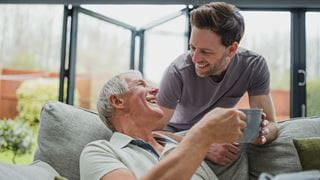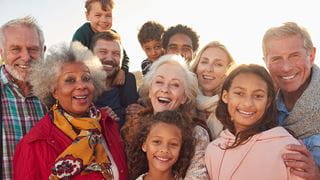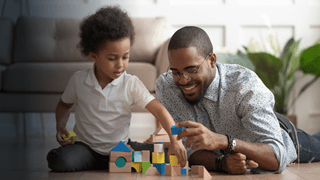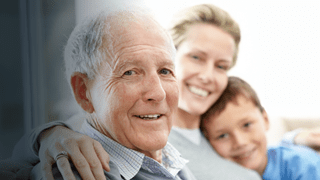How to Safeguard the Elderly
As we get older in life, we can find that we start needing support in everyday activities and begin relying on others more. For some, this can mean that elements of care need to be introduced into their lives, and in some cases, growing older can introduce vulnerabilities that require more specialist care and increase the need for the safeguarding of vulnerable adults.
Protecting vulnerable adults, specifically the elderly, from neglect and abuse is paramount and can be achieved through properly implemented safeguarding measures. In this article, we cover some of the primary principles of safeguarding for the elderly to help you understand the wider context and how you can help protect the elderly from abuse.
What Is Safeguarding in Elderly Care?
Safeguarding the elderly involves protecting and promoting the right for elderly adults to live in safe conditions, free from abuse, neglect or exploitation. Elderly people may become more vulnerable as they age, which means that they require advocacy and greater support from those in a position to identify and stop any mistreatment.
In elderly care, including care homes and social work, professionals have a legal safeguarding duty to reduce the risk of or prevent harm and abuse of the elderly whilst also ensuring that they retain independence, dignity and autonomy where possible. Everybody, regardless of their profession, has a responsibility to safeguard vulnerable individuals, but those working with them are legally bound to do so.
Safeguarding in elderly care will be dictated by safeguarding policies that are either specific to a care home or to the social care organisation that provides support for elderly people. These policies will outline what staff are expected to do to safeguard the elderly, the steps they should take to report any safeguarding concerns, and the measures taken to train staff and keep their safeguarding knowledge up to date.
What is Elderly Abuse?
Elderly abuse is typically the act of harming or taking advantage of an elderly person who may find themselves in a vulnerable position. There isn’t one, single definition of what can comprise abuse, so it’s important to keep an open mind and decide if an action you’ve witnessed could constitute abuse based on context.
Typical examples of elderly abuse can include the following:
- Discrimination, which can target a whole range of characteristics, including race, sex or disability
- Emotional abuse, like bullying, humiliation or creating feelings of fear and anxiety
- Financial abuse, which can involve taking the money or precious belongs owned by an elderly person for an abuser’s personal gain
- Modern slavery, making them take part in forced labour, slavery or human trafficking.
- Neglect, ignoring an elderly person and their needs, actively denying them the things which would provide them safety or even ignoring their need for care
- Organisational abuse, where an elderly person is neglected or denied care within an institution like a hospital or care home, typically by the staff
- Physical abuse, such as being physically harmed through deliberate or careless actions
- Sexual abuse, making them perform sexual acts which they don’t want to do.
Who Can Abuse the Elderly?
It’s possible for anyone who comes in contact with an elderly person to abuse them, but if the abuse is carried out over a longer period of time then it’s likely that the abuser is someone close to the vulnerable person. This could be a carer, employer, health or social worker, relative, or even other care home resident.
Safeguarding procedures are typically in place within institutions, but it’s everyone’s responsibility to work together in protecting individuals from abuse and stopping the elderly from being accessed and mistreated by potential abusers. Anyone that works with or comes into contact with the elderly as part of their job has a duty of care to safeguard them, with roles like nurses and care workers being the most common example of people with responsibility for safeguarding elderly adults.
How Can I Spot Elderly Abuse?
One of the difficulties surrounding elderly abuse is that some of the signs might be dismissed by people as symptoms of mental health issues or becoming frail. However, if you spot anything that causes concern it’s best to raise this with the relevant parties to ensure that any abusive behaviour is stopped as early as possible.
Signs of elderly abuse can include:
- Physical: unexplained injuries such as bruises, cuts or worse, broken glasses or frames, signs of being restrained, carers refusing you access to the elder person in a one-to-one context
- Emotional: threatening or controlling behaviour from staff, concerning behaviour from the abused person such as rocking or mumbling which would be consistent with emotional distress
- Sexual: bruising around genital areas, unexplained infections or bleeding, damaged or stained underwear
- Neglectful: dramatic weight loss from malnourishment, untreated physical issues, dirty or unsafe living conditions, poor hygiene
- Financial: large amounts of money withdrawn from banks accounts, items missing from house/room, unexplained changes in will or power of attorney, unnecessary subscriptions or services
Whether you work in a care home, regularly visit elderly people as part of your job or have an elderly relative, you may notice any of the signs of abuse. It can be difficult to confirm what may be causing these signs if the victim is confused easily or finds it difficult to communicate clearly, which is why the abuse of vulnerable adults can sometimes take longer to identify.
An elderly person may tell you that they are being abused, or mention behaviour from another person that they don’t realise is abusive. It’s important to always take these reports seriously and prompt further investigation, even if it’s just because of an off-hand comment.
Self-Neglect and Safeguarding the Elderly
The majority of types of abuse involve another person harming someone in a vulnerable position, but self-neglect is a type of abuse that only involves the victim. It is defined as a vulnerable adult engaging in behaviour that puts their health, wellbeing and safety at risk.
When it comes to elderly people, self-neglect may involve someone failing to feed themselves, stopping washing themselves or their clothes, refusing to keep their home clean and tidy, skipping medication, missing medical appointments and engaging in activities that present a risk to their safety. This might be caused by underlying mental health issues or just that the elderly person no longer has the energy or motivation to care for themselves.
Signs of elderly self-neglect include a person appearing thinner, more tired or visibly unwell, dirty skin or dirty clothes, a messy home environment, and worsening health caused by skipping medication or medical appointments. They may also appear depressed or unconcerned about their surroundings and personal health and may refuse social visits and prevent entry to their home.
Dealing with cases of self-neglect is tricky no matter the age of the victim, as everyone has a right to choose the way that they live and exercise autonomy in how they care for themselves. However, in cases of elderly self-neglect, it may be that the behaviour is being caused by something like a mental condition and providing support would stop the abuse.
How To Respond to Elderly Abuse
If you’re concerned about an elderly person being the potential victim of abuse, it’s crucial that you voice your issues. Talking to someone you trust, such as a friend, family member or healthcare professional, can help you decide the best course of action and raise any concerns.
It’s always best to try and speak to the elderly person about your concerns, unless you suspect that doing so might cause more harm. Where possible, you should involve them in the decision to tell someone about suspected abuse, but they may not agree to this if they are worried about damaging a familial relationship for example.
You may feel that reporting abuse is the right thing to do, but have to remember to respect the elderly person’s autonomy to make their own choice. However, if you feel that the victim is still at risk or that the abuser may be harming other people, you may decide that it is better to report the suspected abuse.
Some elderly people may have limited or impaired mental capacity, which means that you cannot discuss concerns of abuse with them. In these cases where you suspect the abuse of vulnerable adults, you should discuss your concerns with a designated safeguarding lead or local authority to prompt further investigation. When there’s the potential for the elderly person to be in immediate danger of harm, you will need to contact the police right away.
FAQs
Why might neglect occur in a care environment?
Neglect may occur in a care environment for several reasons, which is why it’s a key topic when talking about safeguarding in care homes for the elderly.
In some cases, a care home may be understaffed or lack an effective management system which means that staff are unable to provide necessary care to all residents or neglect them due to inefficient structural organisation. In others, staff members may intentionally neglect the needs of care home residents in order to harm them.
No matter the reason, neglect is unacceptable in a care environment and must be stopped to continue safeguarding older adults.
Who is responsible for safeguarding adults?
Safeguarding is considered everyone’s responsibility, as we all have the capacity to recognise signs of abuse or exploitation and act to try and stop this. However, in England there is a particular responsibility for local authorities to support vulnerable adults, as outlined by The Care Act 2014, which says that these organisations must carry out an enquiry if there is a concern that an adult is being abused or neglected.
Many jobs also involve responsibility for safeguarding and supporting vulnerable adults, such as those in the medical, social care and charity sectors. If you work with adults that are more at risk of abuse, you will likely have a legal responsibility to safeguard them.
What is classed as a vulnerable person?
‘Vulnerability’ is defined by the UK government as a “need of special care, support, or protection because of age, disability, risk of abuse or neglect”. A vulnerable adult is additionally defined as someone “unable to take care of themselves or protect themselves from exploitation.”
Summary
Safeguarding is a shared responsibility, split between everyone who comes into contact with vulnerable people regularly. Safeguarding elderly adults, and safeguarding in a care home in particular, are incredibly important for anyone that has contact with this group of people to ensure that abuse doesn’t take place and that older people can live their lives without fear of being mistreated by those that should be taking care of them.
If you’re interested in learning more about how you can help to protect vulnerable people from abuse and spot safeguarding issues in care homes, we offer online ‘Safeguarding Adults Level 2’ and ‘Safeguarding Adults Level 3’ courses that cover these topics and more and can help you get a comprehensive understanding of safeguarding principles.



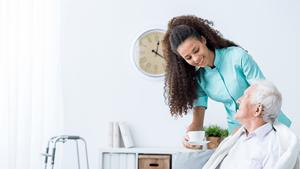
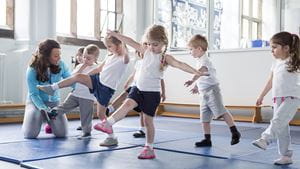


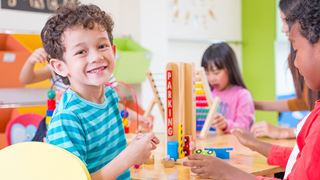

/safer-recruitment.jpg?mw=320&hash=A2BB5E144C89C295EC10C63680F69F39C4C3E566)


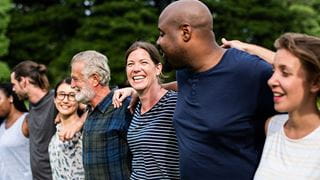

/e-safety-.jpg?mw=320&hash=A9FCF6B70F32AD3EA74633373FF0213B000F75FF)

